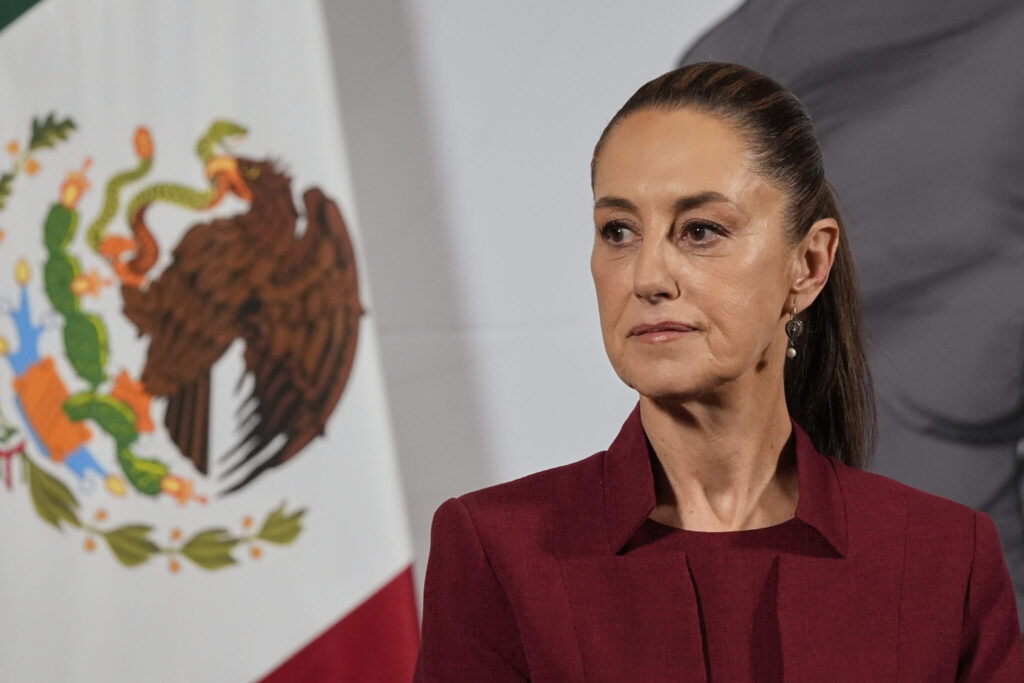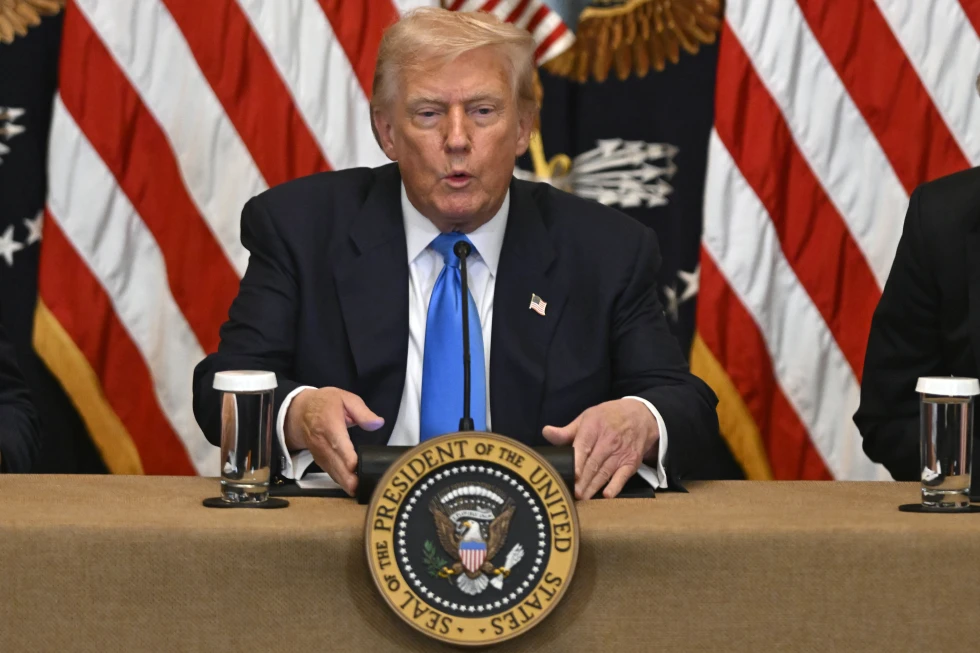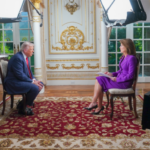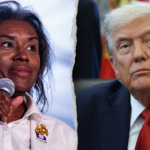Trump Announces 90-Day Negotiating Period with Mexico/ Newslooks/ WASHINGTON/ J. Mansour/ Morning Edition/ President Donald Trump has announced a 90-day negotiation period with Mexico, while maintaining steep tariffs on key imports. The move follows a call with Mexican President Claudia Sheinbaum and aims to address both fentanyl trafficking and trade imbalances. Tariffs on autos, steel, copper, and aluminum remain in place as talks proceed.

Trump’s Mexico Tariff Plan: Quick Looks
- 25% tariffs on Mexican goods remain during 90-day talks
- Trump spoke with Mexican President Claudia Sheinbaum in what he called a “successful” call
- Tariffs tied to fentanyl trafficking and trade imbalances
- Autos remain at 25%; steel, aluminum, copper at 50%
- Trump hints at ending Mexico’s “non-tariff barriers” without specifics
- USMCA protections still apply to some goods, but Trump is souring on the deal
- The U.S. trade deficit with Mexico reached $171.5 billion in 2024
- USMCA renegotiation looms in 2026, possibly altering North American trade rules
- Trump previously reimposed tariffs on Mexico and Canada early in 2025
- The administration links tariffs to closing the trade gap and tackling fentanyl flows
Deep Look: Trump Holds Firm on Mexico Tariffs, Opens 90-Day Negotiating Period
WASHINGTON, D.C. — President Donald Trump announced Thursday that the United States will maintain its 25% tariffs on a wide range of Mexican imports while launching a 90-day negotiation window with Mexican President Claudia Sheinbaum. The announcement followed what Trump called a “very successful” phone call with Sheinbaum, focused on trade relations and joint concerns about fentanyl trafficking.
Posting on his Truth Social platform, Trump claimed that the two leaders are “getting to know and understand each other,” signaling an attempt at diplomacy amid tough trade rhetoric.
Despite the opening for negotiations, Trump made it clear that tariff rates will not be relaxed during the 90-day window. Notably, automobiles imported from Mexico will continue to be taxed at 25%, while copper, steel, and aluminum face a staggering 50% tariff. These elevated rates are part of Trump’s broader effort to pressure Mexico into stronger cooperation on both drug interdiction and trade reform.
A Shifting Trade Strategy
While Trump touts these tariffs as necessary tools, they represent a departure from the 2020 U.S.-Mexico-Canada Agreement (USMCA), which shielded many goods from such penalties. The USMCA, a signature deal from Trump’s first term, is now under increasing scrutiny from the president, especially as its renegotiation deadline looms next year.
During his second term, Trump has already reinstated tariffs on Mexico and Canada, signaling a tougher posture despite having previously signed a trilateral trade pact designed to foster free trade across North America.
Although some categories of imports remain protected under USMCA provisions, Trump appears to be testing the boundaries of that agreement. By invoking national security and public health concerns, particularly around fentanyl, Trump is framing the tariffs as defensive economic measures rather than punitive ones.
Targeting Fentanyl and the Trade Deficit
Trump has repeatedly tied the tariffs to efforts to stem the flow of fentanyl into the United States, a narrative he has used to justify new trade barriers. However, experts note that most fentanyl arrives from China via indirect routes, and the connection between autos and heavy metals imports and the drug trade remains tenuous.
What is more apparent is Trump’s ongoing concern over the U.S. trade deficit with Mexico, which hit $171.5 billion in 2024, according to the U.S. Census Bureau. That’s a stark increase from the $63.3 billion imbalance in 2016, before Trump first took office.
The president has said that reducing that gap is essential to his “America First” economic policy, and he sees tariffs as an effective tool for pressuring foreign governments to address what he deems unfair trading practices.
Non-Tariff Barriers and Undefined Reforms
Trump also claimed Thursday that Mexico has agreed to eliminate unspecified “Non Tariff Trade Barriers.” However, he did not elaborate on what those barriers are or how their removal would be verified.
Non-tariff barriers typically refer to regulations, standards, or licensing requirements that restrict imports or make foreign competition more difficult. Trade experts caution that such claims require substantive details and enforcement mechanisms to be meaningful.
Looking Ahead: Will the Talks Bear Fruit?
As the 90-day countdown begins, business leaders, economists, and international partners will be closely watching the scope and outcome of the negotiations. The potential for expanded tariffs or a collapse in talks could further strain U.S.-Mexico trade, already rocked by previous policy shifts.
The talks also take place against a volatile backdrop of U.S. global tariff threats, including proposed duties on Brazil and Canada, and deepening skepticism among global allies about the U.S.’s trade posture under Trump.
With USMCA’s future hanging in the balance and tariff uncertainty clouding the business climate, the next three months could significantly reshape North American commerce.







